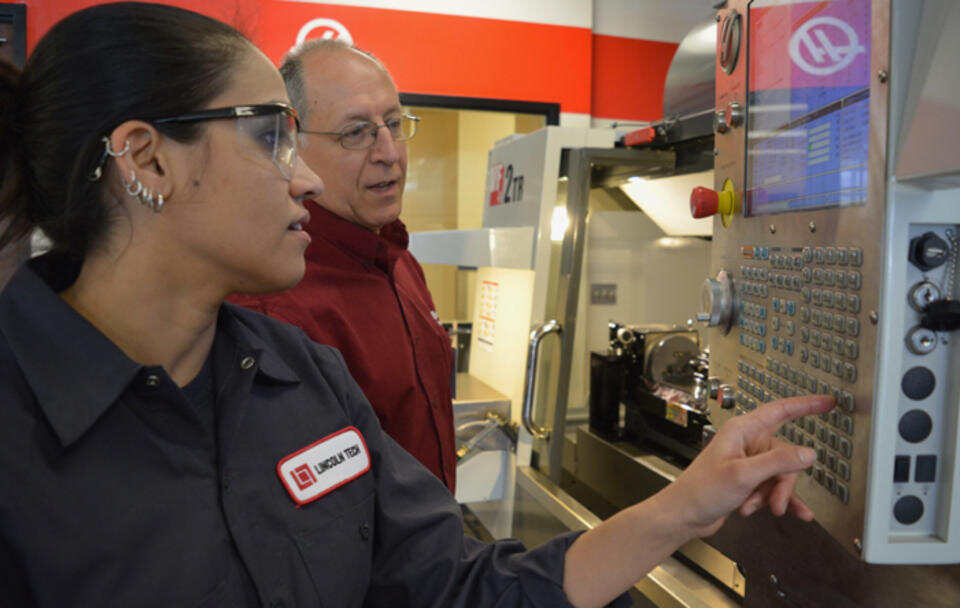Women in Manufacturing - Closing the Gender Gap and Driving Change

Changing the perception of the Industry
Women all over the world are stepping up to close the gender gap in manufacturing, a traditionally male-dominated industry. Still less than 30% of the manufacturing industry is made up of women.1 What was once considered to be blue-collar, is now being called pink-collar. Pink is the new blue!
Women in Manufacturing - Then and Now
During the turn of the century an African-American woman named C.J. Walker, formerly Sara Breedlove who started out as a laundress making less than one dollar a day, became the world’s first female self-made millionaire. In 1906, after working on commission for a woman named Annie Malon selling haircare, she took the trick of the trade and created her own haircare line. Thus, starting her own company called Madam C. J. Walker Manufacturing.
In 1941, the United States entered World War II. Aside from a world war, the US also faced a very serious issue. Men aged 18 – 64 were required to register for the military draft. This left needed positions for jobs in manufacturing empty. The United States needed women to step up and help with jobs like, manufacturing uniforms, vehicles, and even munitions. More than 310,000 women worked in the U.S. aircraft industry in 1943, making up 65 percent of the industry’s total workforce (compared to just 1 percent in the pre-war years). Rosie the Riveter was an iconic recruiting image for women during World War II. With her red bandana and her “We can do it!” attitude, Rosie sparked a revolution for women all over the U.S. and led them to work in manufacturing to support the soldiers in their defeat against the Nazis2.
Fast forward to 2022. According to the U.S. Department of Commerce, while women make up about 47% of the total workforce, they only make up about 30% percent of the 15.8 million people employed in manufacturing industries, and only 1 in 4 manufacturing leaders are women. Women like Barbara Humpton give other women in manufacturing the courage to pursue their dreams. She started out as a software programmer for IBM, and was told to choose: have a baby or have a career. She decided to choose both. After perseverance and hard work, at the age of 57, Humpton became the CEO of Siemens (USA), a multi-billion-dollar, industrial manufacturing company, that produces power plants and other technologies3.
Jobs in Manufacturing
Employment in manufacturing increased from 11.4 million (April 2022) and has increased to 13 million jobs in January 2023.4 That could mean that occupations that were once male-dominated have the possibility to be gender neutral, as women forge ahead into these positions.
There is a vast array of manufacturing jobs that women can train for, including Collision Repair and Refinishing, Machining and Manufacturing, and Welding Technology. Most occupations in this zone require training in vocational schools, related on-the-job experience, or an associate's degree, which up until the last century made it tough for women who want to have or already have children. Women have struggled for centuries with being in the workforce, due to maternity and the stigma that surrounds it: Would women be able to continue to do their duties after giving birth or would they have to relinquish them to raising a child?
What most people didn’t believe is that women could do both. Another woman that proved society wrong about having a career and raising a child was Solveig Erikstad. Although she was not the first female in welding, she was recruited in 1976 as the first female welder for Ulstein, a multimillion-dollar ship design and manufacturer. The ad they published was targeted for housewives and piqued her interest when it mentioned free kindergarten. Erikstad worked for Ulstein until she retired in 2003.5
Women all over the world are becoming more and more interested in male-dominated jobs. The industry that has great growth is Machine and Manufacturing, with career opportunities like CNC Machinists. A Computer Numerical Control (CNC) Machinist operates computer-controlled tools, machines, and robots to machine or process parts, tools, and other workpieces made of metal, plastic, wood, stone, or other materials. With the ability to use technology over manual labor, CNC machines can perform the same tasks without the “heavy lifting” per se.
Ďă¸ŰÁůşĎ˛Ę×ĘÁĎ´óČ« Tech, female CNC graduate, Taylor Hamer wants women to know they should, “Go for it!” She also said, “You will never know until you try. Worst case scenario, you decide you don’t want to do it anymore but you have learned a new skill. There is a place for everyone in the manufacturing field and the more diversity of knowledge and experience there is, the better the field can become. If you are artistic, you can design. If you are great with numbers, you can program. I was a dance major before I joined this field and thought I was going to have to start from scratch and that nothing would carry over and that was terrifying. Once I started, I realized that my sense of special awareness and 3D visualization was a major help in machining.” Women in manufacturing are more empowered than ever!
1 – Retrieved on 3/8/2023.
2 - Retrieved on 3/8/2023.
3 Published 7/25/2018, and Retrieved on 3/8/2023.
4 Release date 2/3/2023, Retrieved on 3/8/2023.
5 Retrieved on 3/8/2023.
NOTE: This Article was rewritten & updated on March 8, 2023, to reflect updated labor statistics and an in-depth review of the key women in the manufacturing industry.

